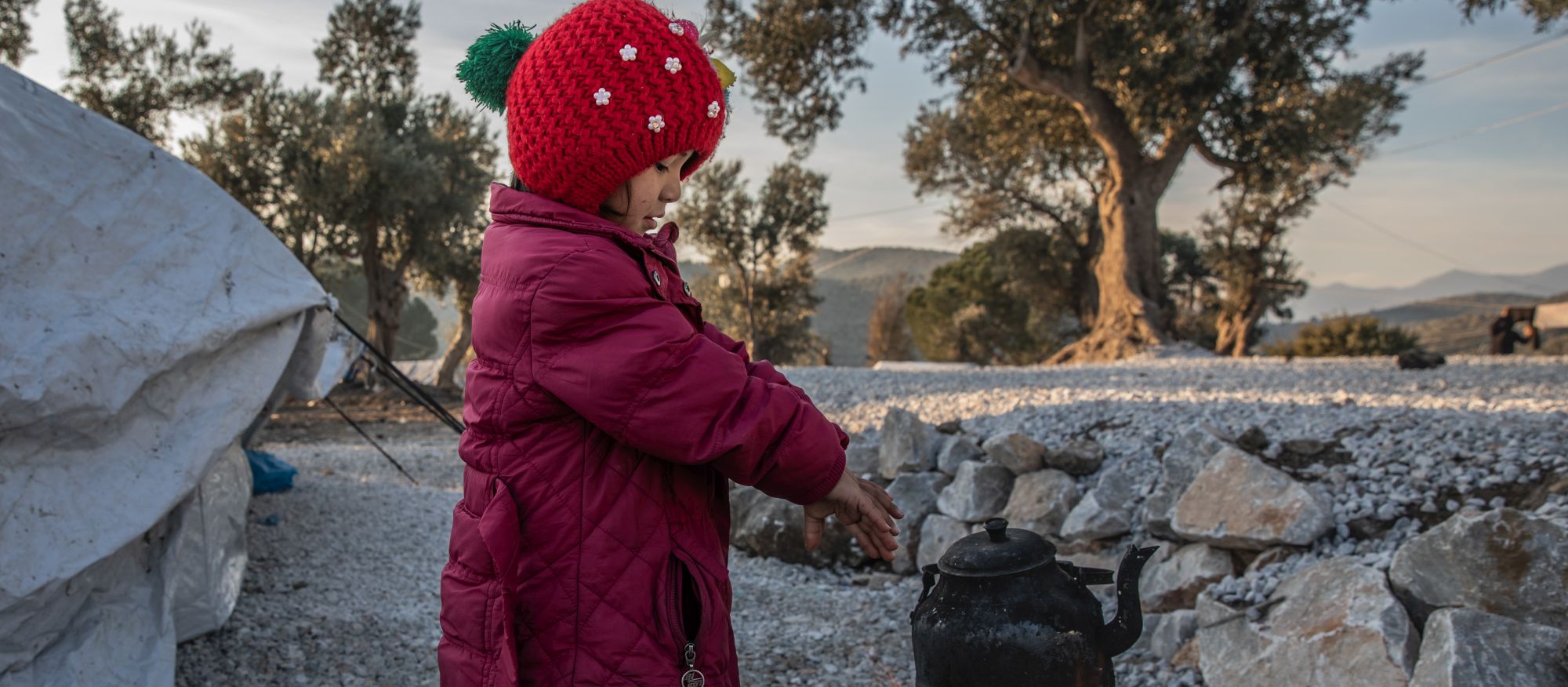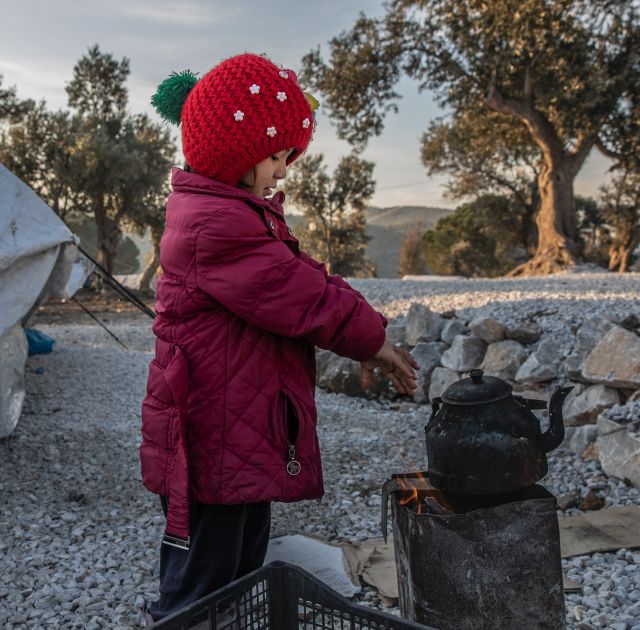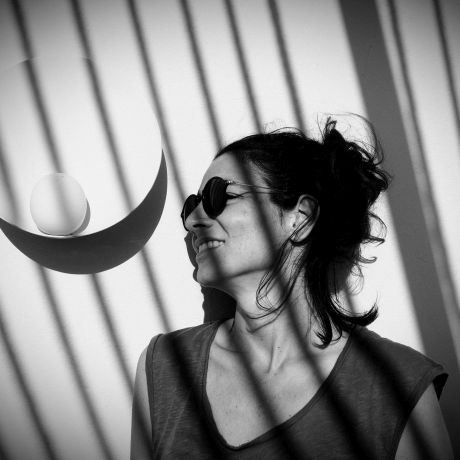While migration is also experienced by women, male voices overwhelmingly dominate journalistic coverage of the subject. “Elles també” is a decade-long project by photojournalist Anna Surinyach, aiming to combat the invisibility of women in major population movements. Despite comprising half of the world’s displaced population, women are often sidelined in media coverage, distorting the narrative. It’s not about perpetuating the cliché of ‘giving voice’ to a group, but rather about normalising women’s presence in situations where human rights violations occur. “Elles també” portrays the experiences of women and girls in Rohingya camps in Bangladesh, highlights the stories of those who have suffered the consequences of European migration and asylum policies and brings to light the plight of thousands of displaced women displaced by various conflicts.
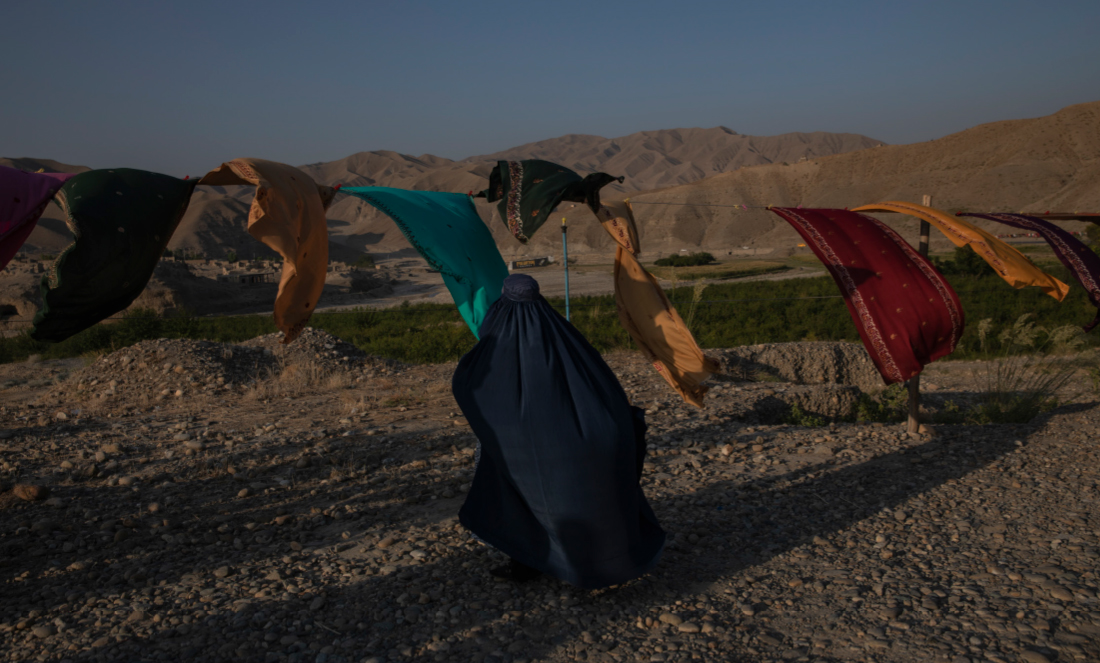
Afghanistan (2021). Selling scarves along the road between Jalalabad and Kabul. In August 2021, the Taliban regained power in Afghanistan after two decades of conflict with the United States and NATO. Among the populace, women bear the brunt of the new regime’s impact: the Taliban compel them to cover themselves completely, stifling any dissent with harsh suppression.
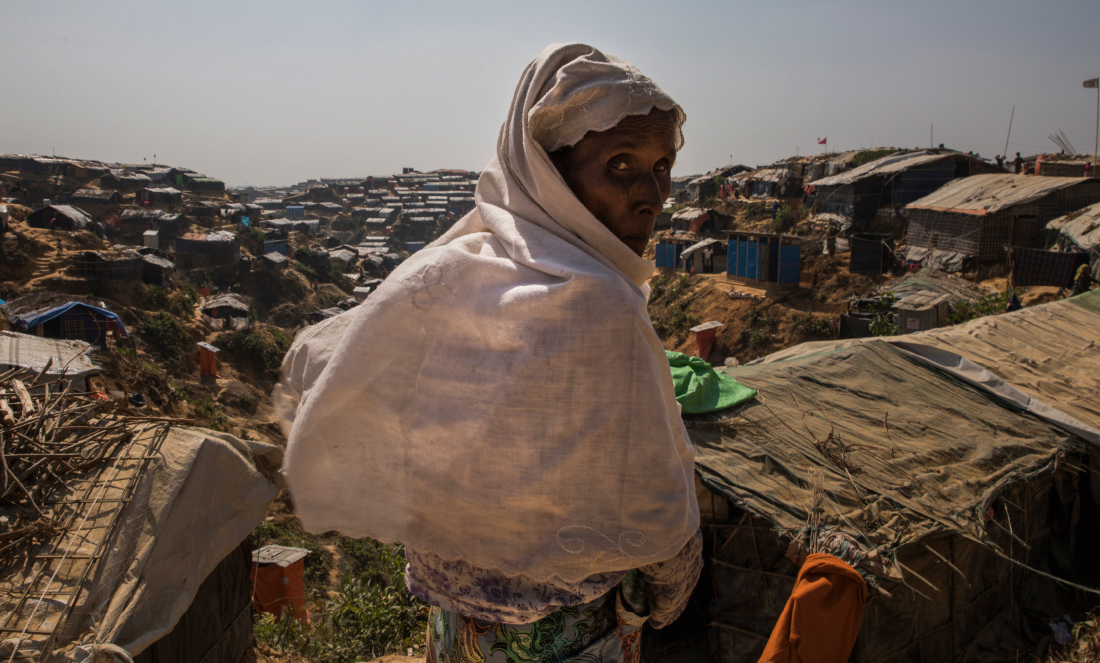
Bangladesh (2018). Over 700,000 Rohingya have arrived in Bangladesh since 25 August 2017, fleeing attacks by Burmese security forces. They have settled in Cox’s Bazar in precarious, makeshift and densely populated settlements. Lack of access to healthcare has made this population victims of the worst diphtheria epidemic of the 21st century.
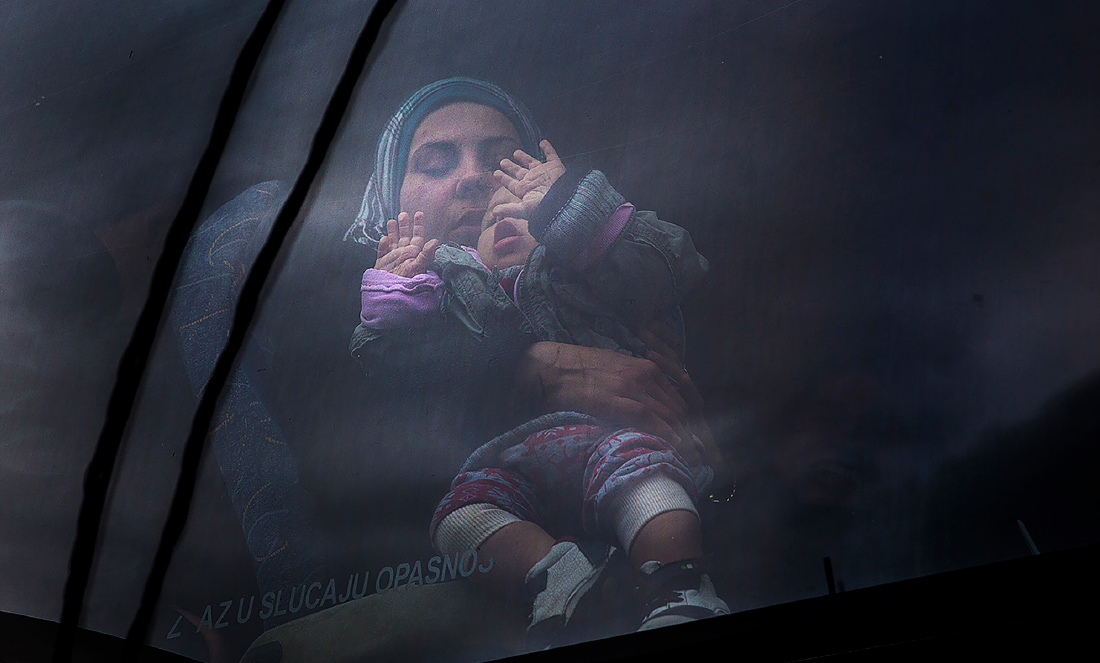
Macedonia (2015). A mother and her baby wait for a bus stopped in Presevo to take them to the gates of the European Union, at the Serbia-Croatia border. In 2015, over a million people, victims of various human rights violations, arrived in Europe seeking refuge.
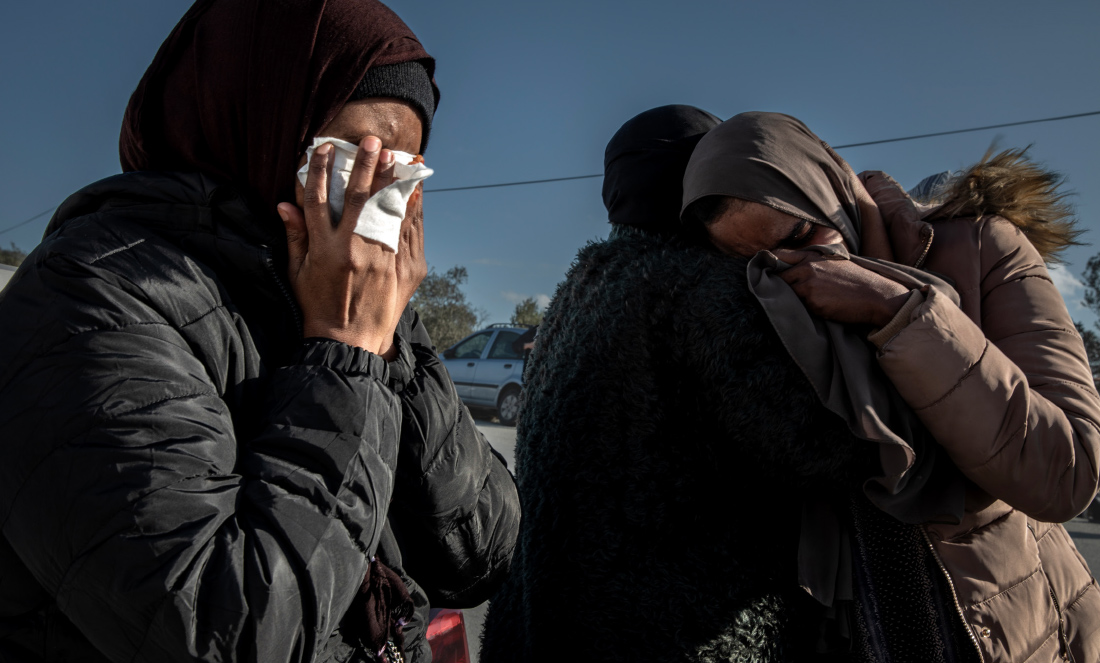
Greece. Lesbos (2020). “We came to Europe seeking peace, and this is what we have found”. A group of Somali women weep outside the gates of Moria, Europe’s largest refugee camp, mourning the murder of Ahmed, a brother of one of the women.
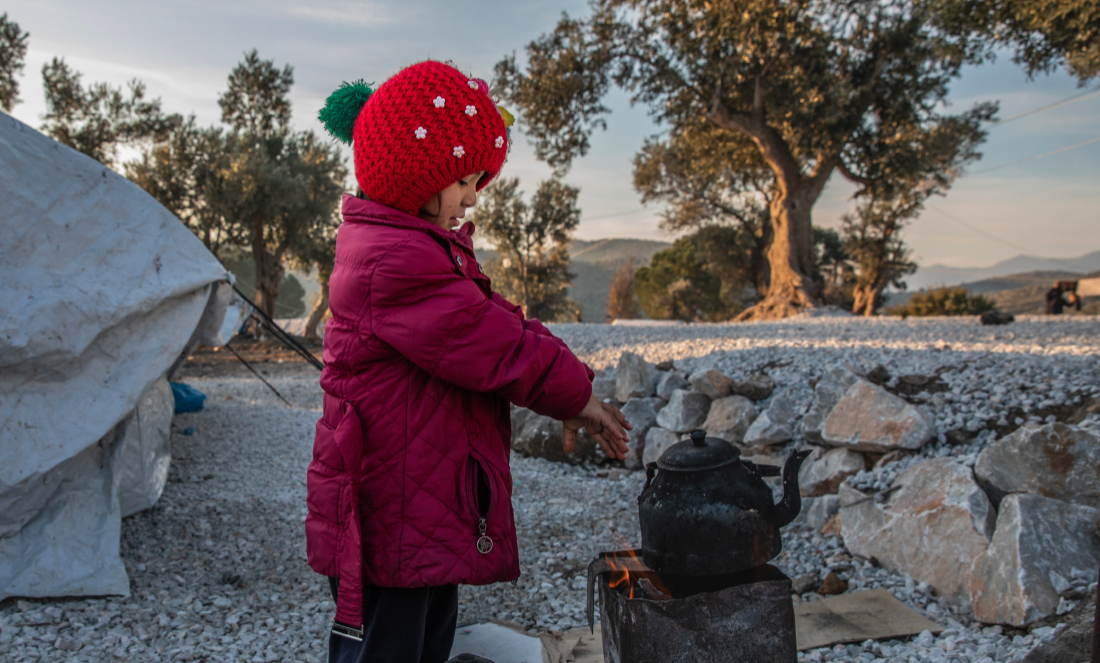
Greece. Lesbos (2020). An Afghan girl warms herself in the now-defunct Moria refugee camp, where 40% of the residents were minors. Originally intended for about 3,000 people, it ended up accommodating 20,000. All awaited resolution of their asylum requests on the island of Lesbos.
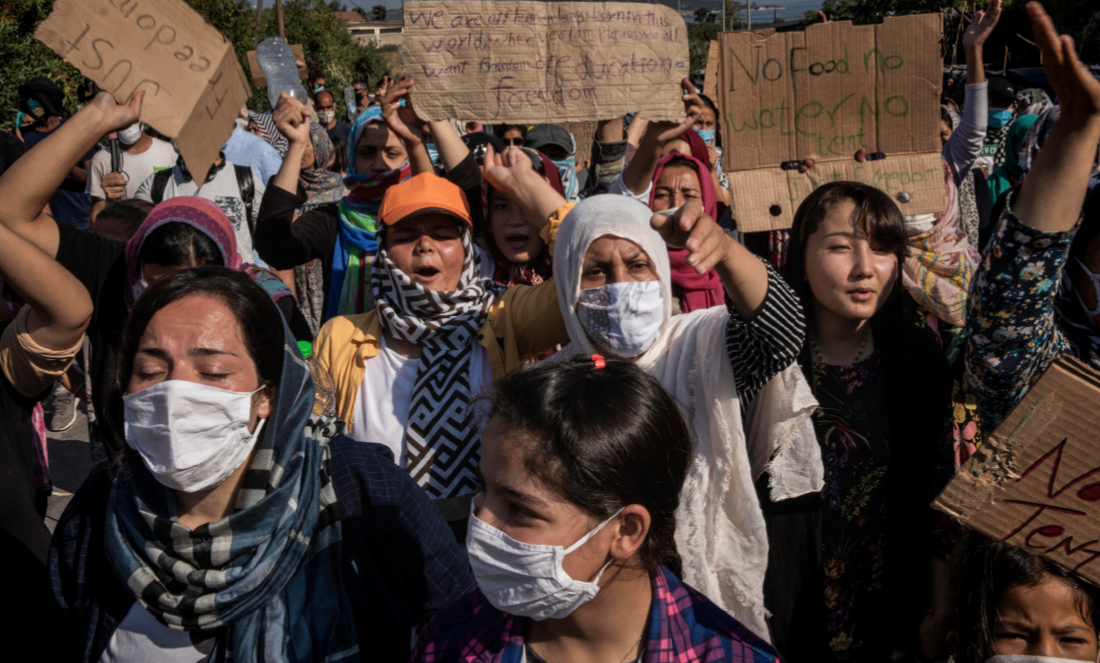
Greece. Lesbos (2020). “No to the camp. Freedom!” Hundreds of people, mostly women and girls, demonstrate along the road to Mytilene. They became stranded after the blaze that engulfed the large camp of Moria, in the early hours of 9 September.
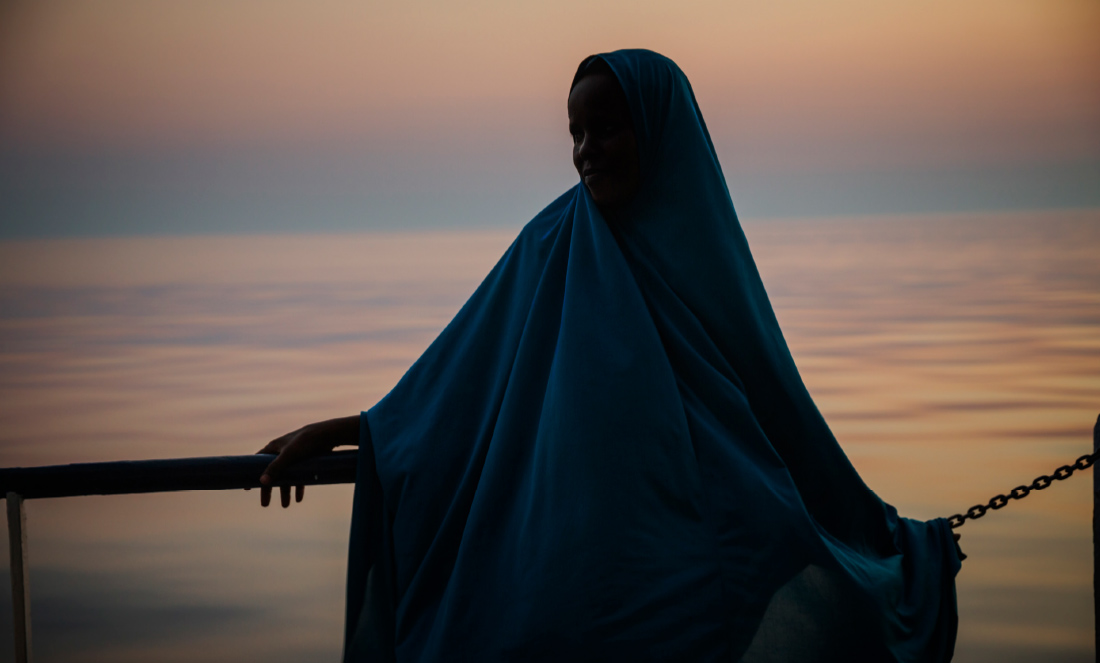
Mediterranean (2015). Fatima, a 15-year-old Somali girl, aboard the Dignity rescue vessel operated by Doctors Without Borders. She had fled Somalia seven months earlier without informing anyone; she didn’t know who had paid for the journey for her and some of her companions, who were also minors. In Europe, she explained, she would work to pay off the debt and to bring her mother and sisters over.
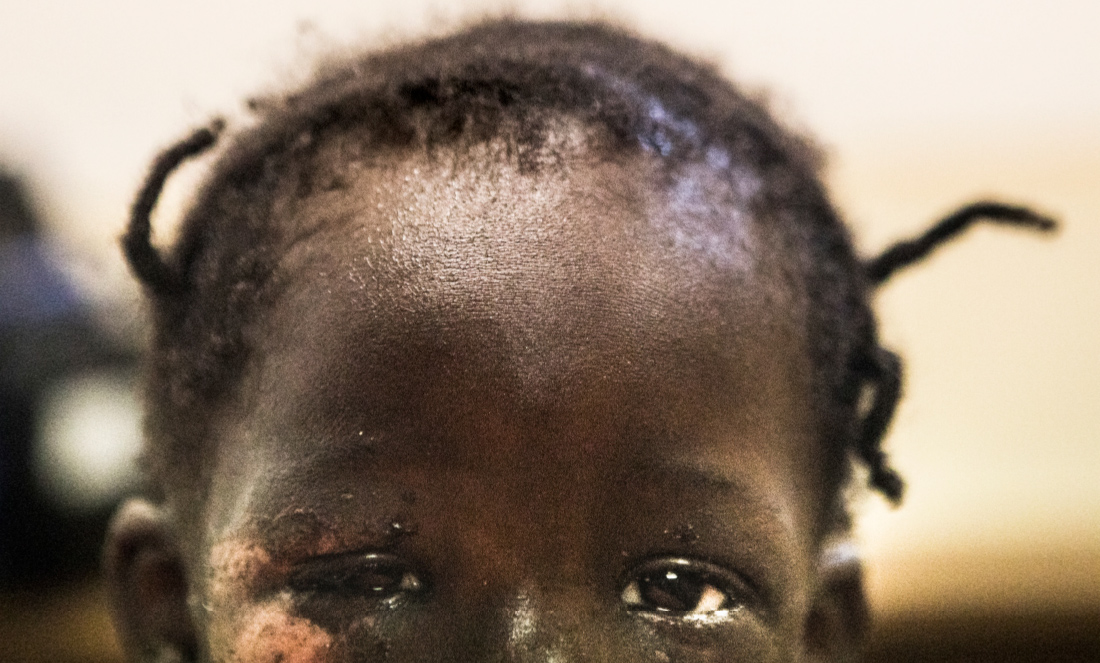
Mediterranean (2017). Sara Traoré is a two-and-a-half-year-old girl from the Ivory Coast who came perilously close to death at sea. She had set out from Libya on an inflatable boat with over a hundred people crammed aboard, accompanied by her mother and nine-year-old brother. Both of them lost their lives. She was rescued by the Catalan NGO Proactiva Open Arms.
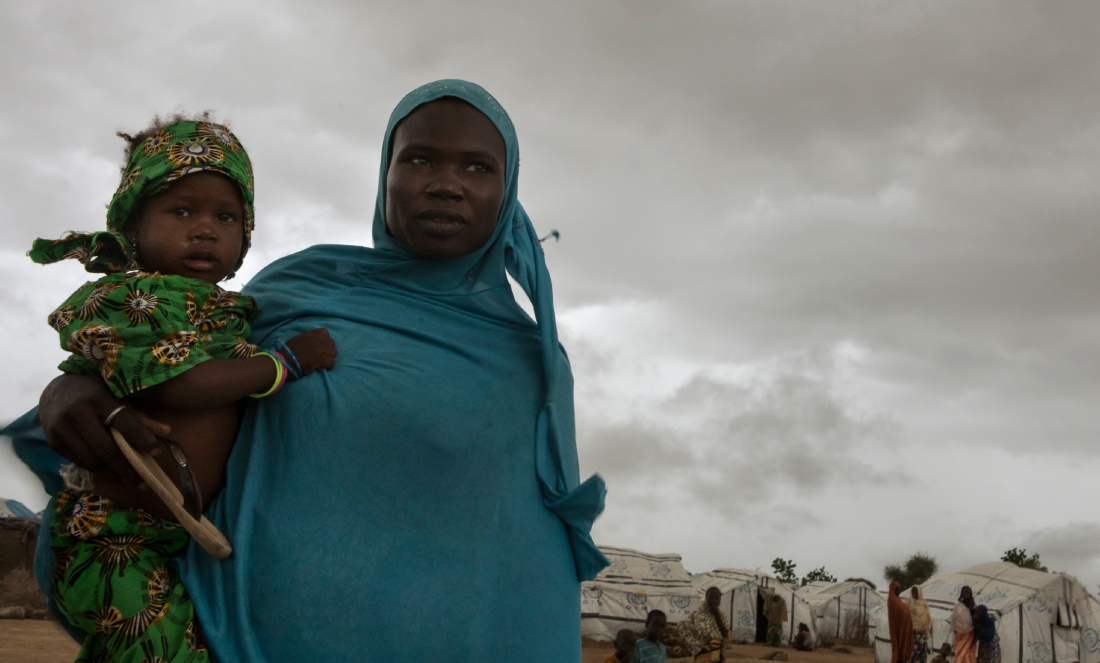
Nigeria (2017). Pulka is one of the places where many people seek refuge in Nigeria, fleeing the conflict between the regional armies and Boko Haram. When the jihadist group attacked her village, Fatima had to flee while pregnant with Inna, along with her five other children. Inna was born during the escape, in the forest. Now three years old, she has always lived in exile. Her father was killed.
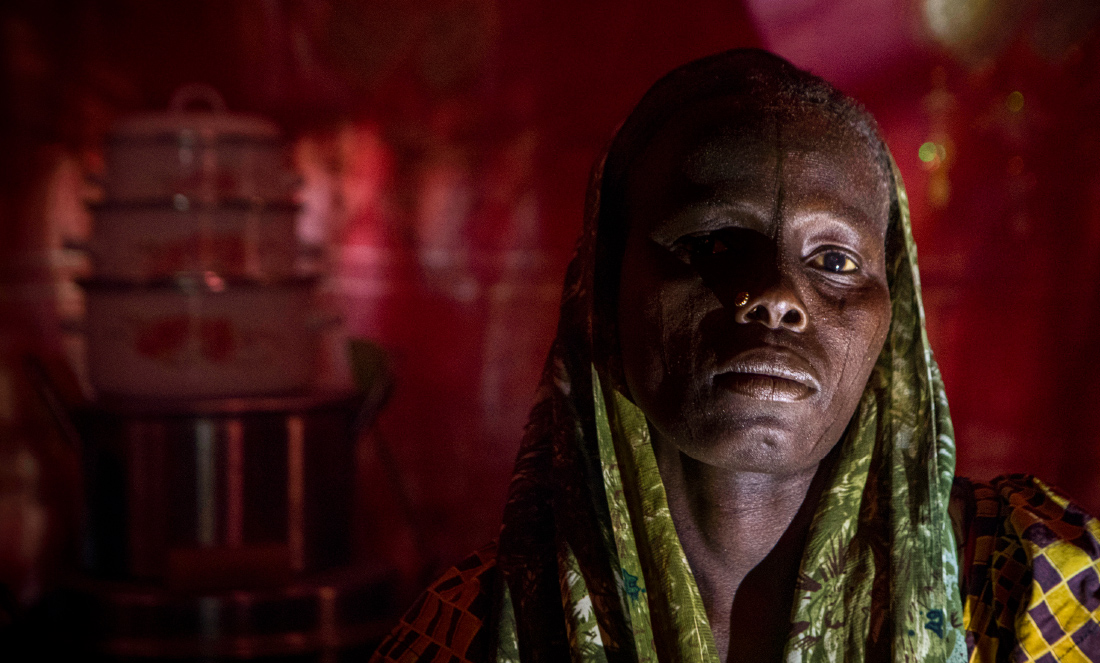
Chad (2017). Yande Omar lives in the Diameron displacement camp. “Boko Haram attacked us in the dead of night, using children who burned down our homes. We used to live in Kofia, on an island in Lake Chad. Holding my daughters’ hands, we walked with our belongings on our heads. It took us two days”, she says. Like most women living in this desert camp, she does not know where her husband is.
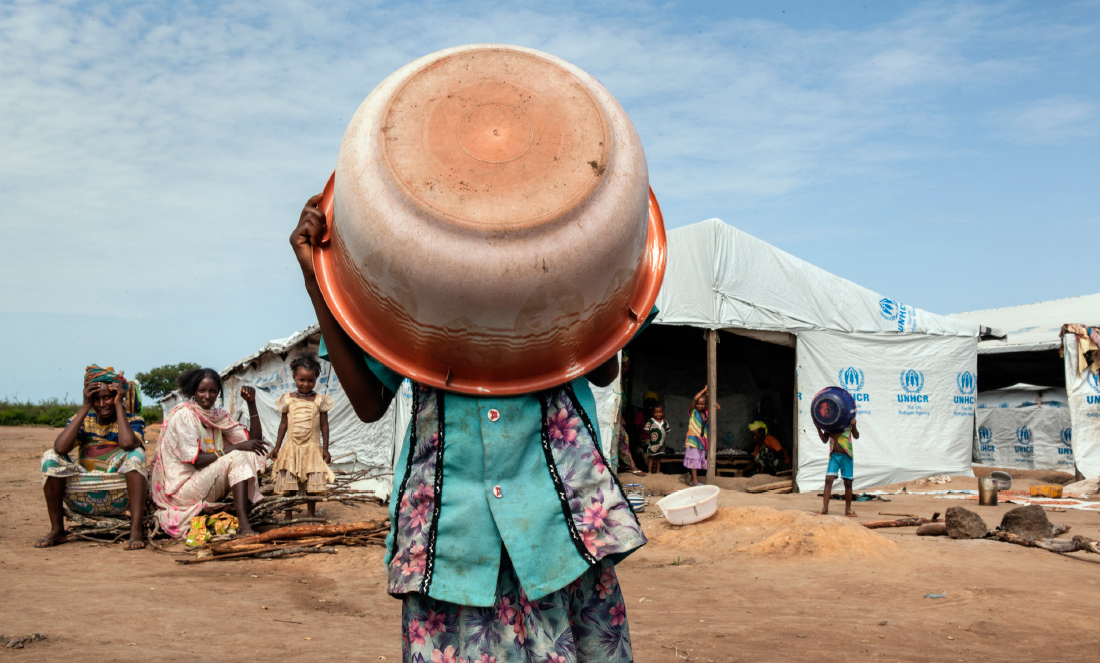
Central African Republic (2016). Hundreds of women are struggling to survive with their children in the makeshift United Nations transit camp in the Central African Republic, near the border with Chad. They arrived between late 2013 and early 2014 when the civil war broke out. In 2015, when they wanted to return, they found themselves trapped in the transit camps. Living conditions are often deplorable.
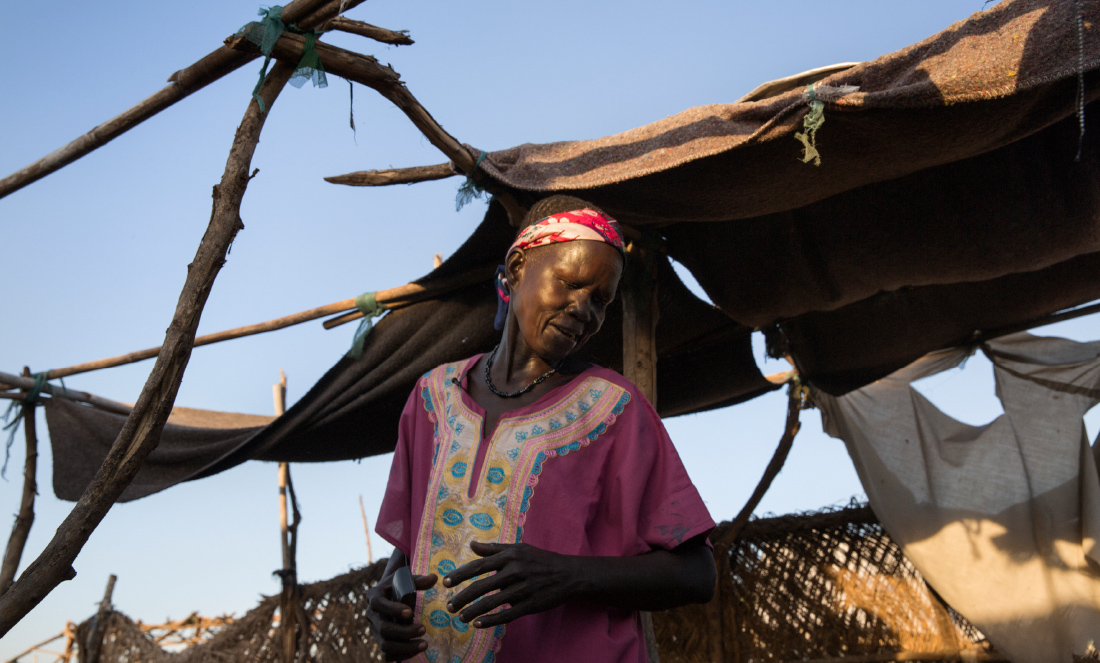
South Sudan (2016). Nyabaled Anyong, a nurse, was employed at Malakal Teaching Hospital. In February 2014, the city was ravaged. “Patients were shot at and killed in their beds. Those who survived fled, without any clothing or belongings”. She resettled in Wau Shilluk, a small village, where she continues to work as a nurse, tending to the displaced community.
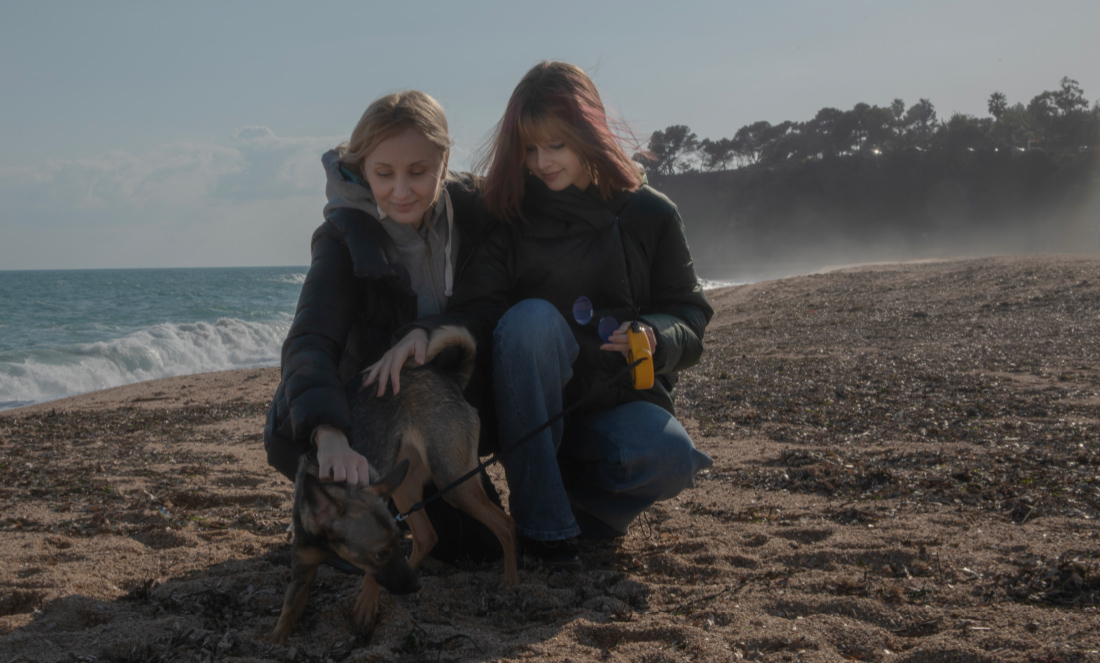
Catalonia. Blanes (2022). Elena and her 13-year-old daughter, Elia, escaped from Kyiv just ten days after the attacks on the capital began. Taking refuge with their dog in Blanes, they found shelter in a hotel managed by the Red Cross. Over the initial six months of the conflict in Ukraine, Catalonia welcomed 31,327 refugees.
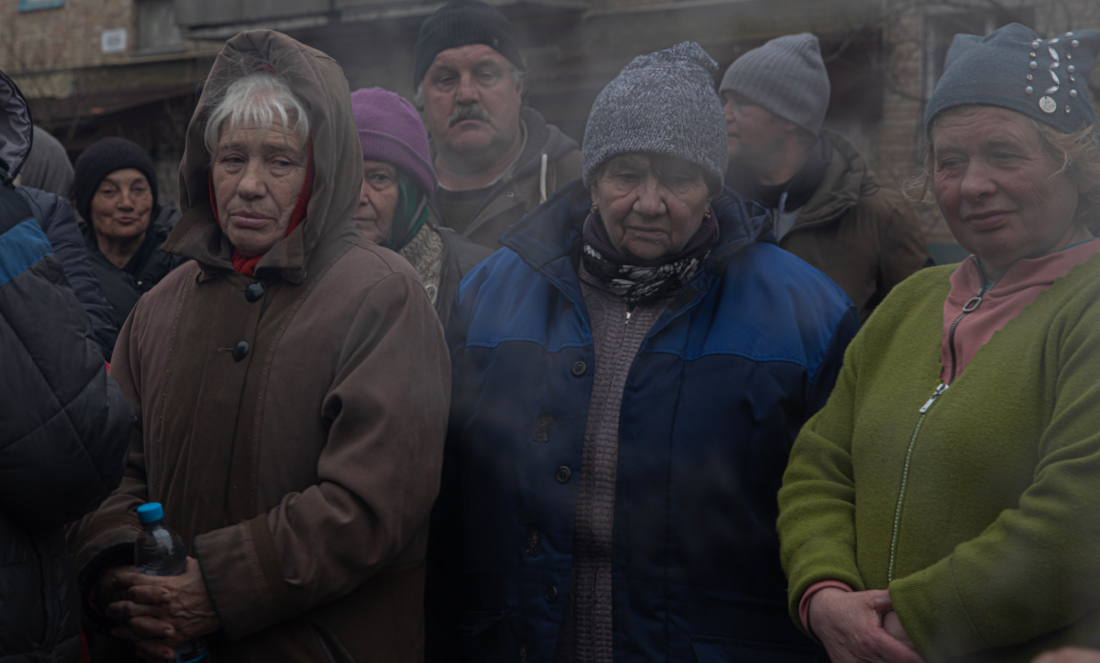
Ukraine. Bucha (2022). A group of women waits to receive food distributed by young volunteers. For a month, the city of Bucha, located 37 kilometres from the Ukrainian capital, lived under Russian occupation. The community of elderly individuals living alone, many of them women, were unable or unwilling to leave the city.
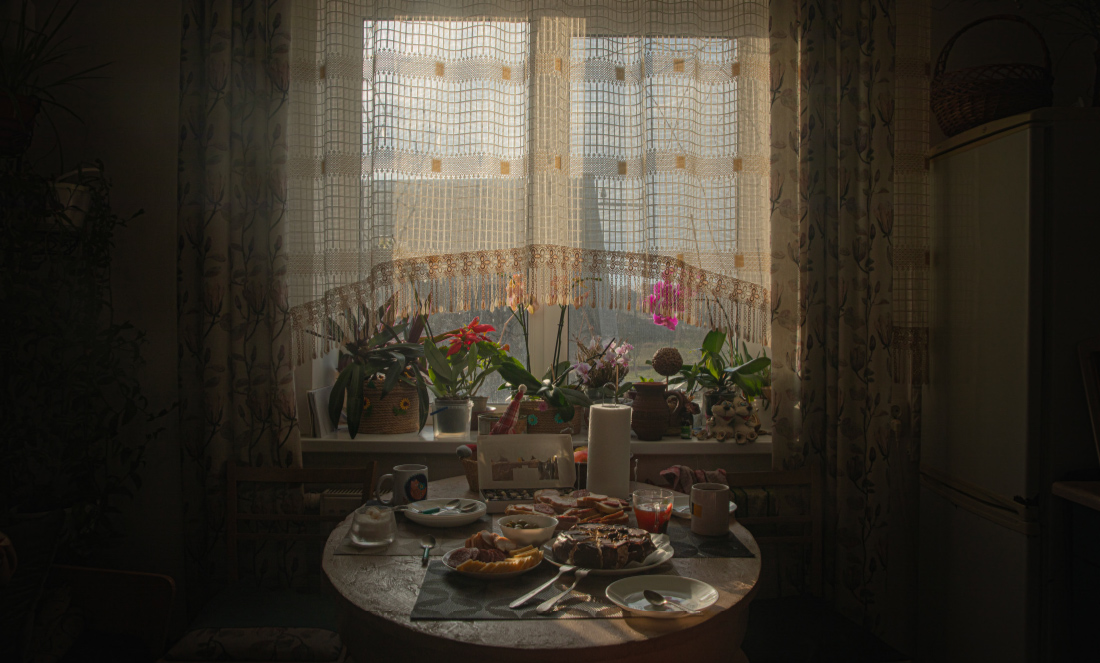
Ukraine. Pisky (2022). Neither Victoria nor her daughter Olga have been willing to leave Ukraine without their husbands. They live in the village of Pisky, near Lviv, a safe area in Ukraine, where they provide shelter to Tetina, Larisa, and Larisa’s father-in-law, all refugees from Kharkiv, the country’s second-largest city, heavily impacted by the conflict. They do not know if their home is still standing.
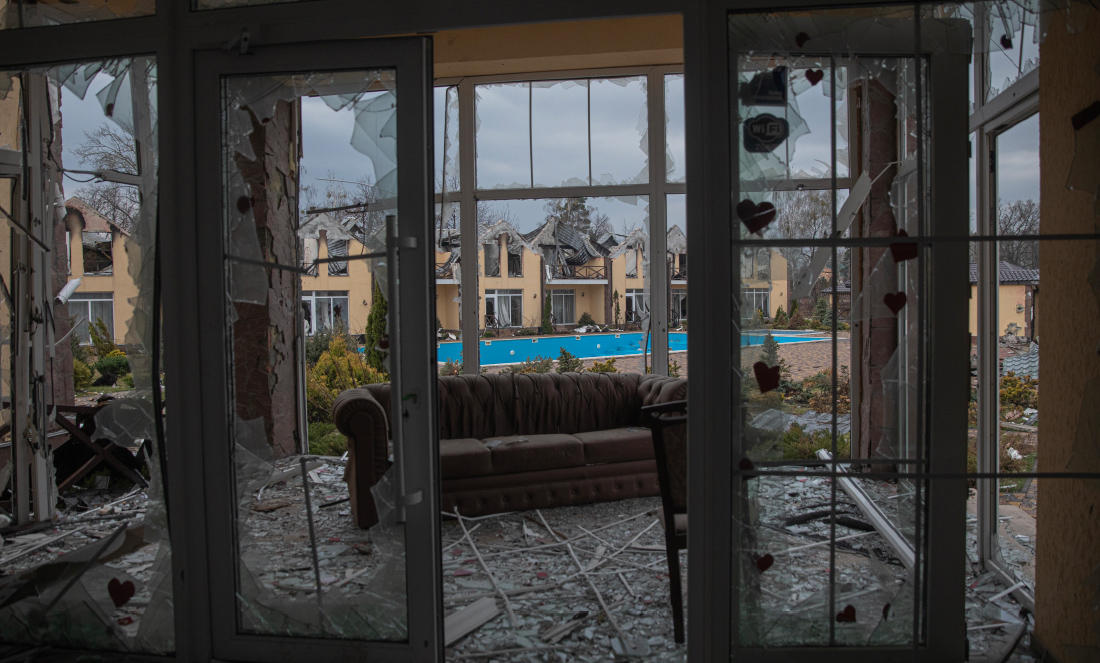
Ukraine (2022). The Villa San Marino, located between Vorzel and Bucha, was bombed and destroyed by Russian attacks. A trench had been dug in the garden. The Russians’ aim was to reach the heart of Kyiv, but they didn’t succeed; they remained in the nearby cities of Bucha, Irpin and Vorzel.
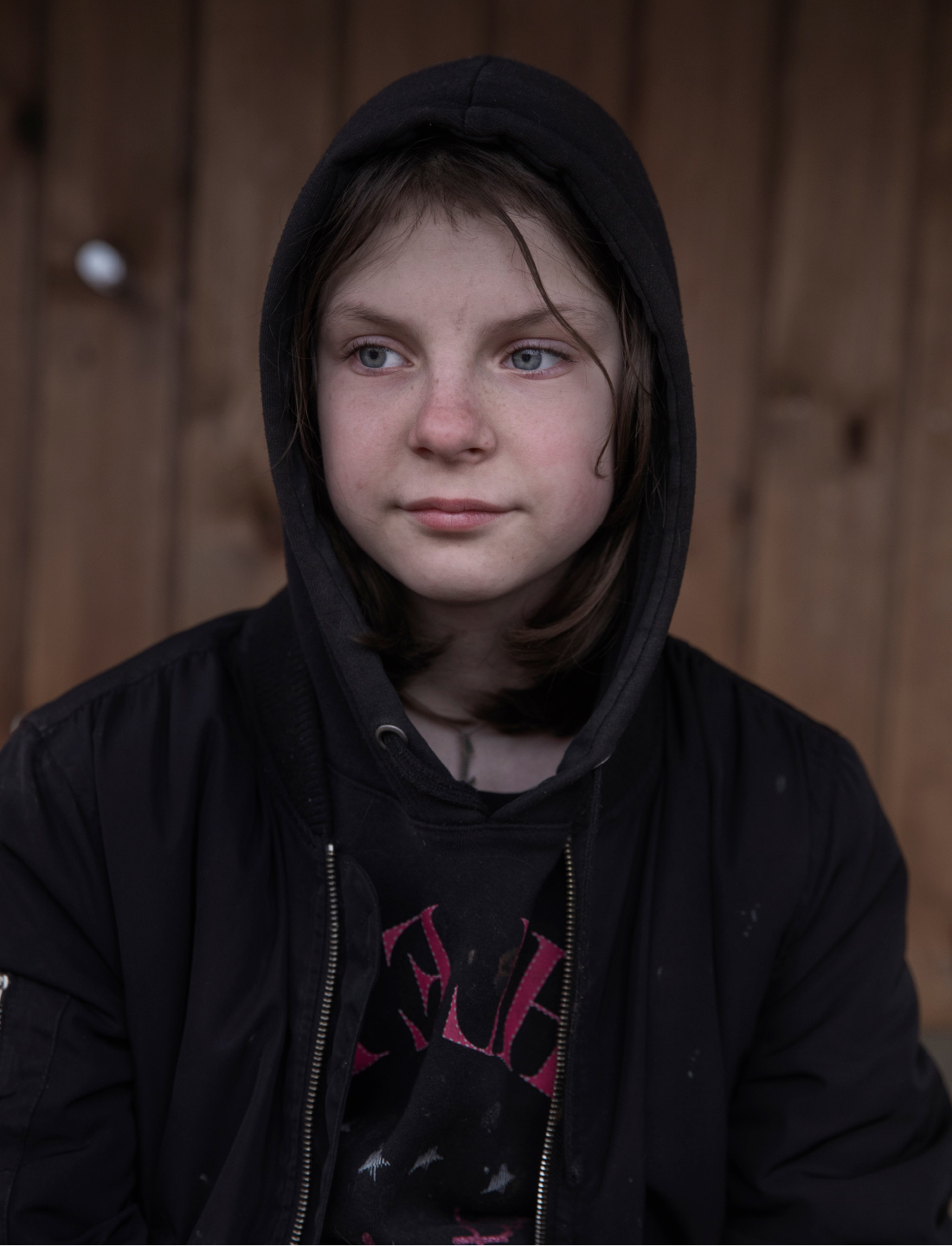
Ukraine. Bucha (2022). Ten-year-old Ruslana lives with her parents, grandmother and older brother on Yablunska Street in Bucha, a city on the outskirts of Kyiv that suffered a month-long Russian occupation. Unable to escape since they did not have a car, they hunkered down in the basement of their home. Olga, Ruslana’s mother, was the sole family member who ventured outside to procure food and water.
The newsletter
Subscribe to our newsletter to keep up to date with Barcelona Metròpolis' new developments



